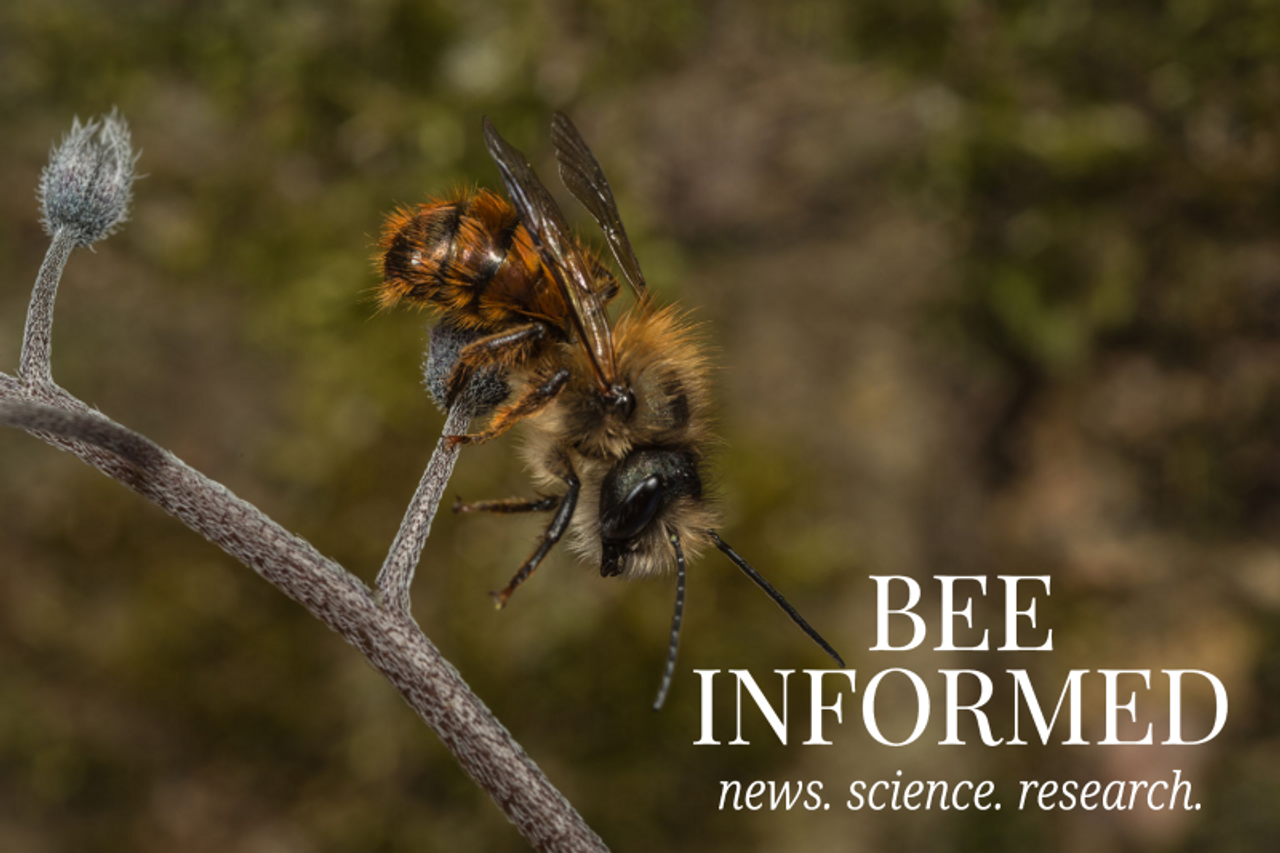
During the 2022 harvesting season, some mason bee raisers in the pacific northwest noticed that a few mason bees had already emerged from their cocoons. Early emergence tells us that the bees have already consumed most of their stored fats (energy), which usually doesn't occur until spring.
The early emergence of mason bees is likely due to the higher-than-average, extended summer temperatures we had in the summer and fall of 2022. When we have higher-than-average summer temperatures, the speed of development increases, and the new bee becomes an adult quicker than usual. Once the bee becomes an adult, it shifts from surviving off carbohydrates to metabolizing its fat stores. The warmer the temps, the faster the bee uses its stored fats.
To learn more about the life cycle of mason bees, check out our Mason Bee Life Cycle article.
On average, the bees' stored fats (energy) at the time of emergence are around 5 -10%, enough for these bees to emerge, mate, and forage (if female). So, if bees emerge in the fall, they've likely reached this 5-10% level and instinctively start chewing out of their cocoons. We've had a few bee raisers ask what they can do to help these early emerges. We're sorry to say they will not survive since there are scarce floral resources, and it is too cold to fly during the day.
Unfortunately, we'll likely see more of these strange occurrences in the coming years due to climate change. Aspects of climate change include warmer winters, earlier springs, and an increasing number of days with extreme heat. With what we know about the relationship between bees and temperature, we can imagine how climate change could affect bee populations.
To learn more about climate change and bees, check out our blog, "Climate Change: It's Bad for Bees."
Fortunately, there are a few things mason bee raisers can do to help minimize losses due to early emergence.
In The Fall
If your mason bee cocoons were exposed to prolonged excessive heat during the summer, consider harvesting cocoons about two weeks earlier than you usually do. Typically, cocoons are harvested between October - November. Just remember, don't harvest too early as mason bees still need summer temperatures to develop into adult bees fully.
If you feel comfortable, you can open a single cocoon and observe the developing bee. Remember, the bee will not survive once you open the cocoon, so we suggest opening a male cocoon. It's easy to locate a male cocoon because mason bees lay male eggs near the opening of the nesting hole. Once open, if the bee doesn't have fully developed wings or the body shell appears dull, the bee needs more development time. You can harvest your cocoons if the body shell is shiny and the bee moves around.
Get cocoons into cold storage as soon as they fully develop into adult bees. At Crown Bees, we store them at 34° - 35°F (1°C). Keep in mind that the warmer your refrigerator, the faster the bees will use their fat stores.
In The Spring
Check on the bees in your refrigerator once in a while. If males begin emerging before average daily temps are 55°F+, soak a cotton ball or paper towel in a 50/50 white sugar/water solution and place it in the container with your bee cocoons and emerged bees. Providing food should help give the males enough energy to survive for a couple of weeks.
Females handle the situation a bit differently. After using up stored fats, they absorb their eggs for extra energy instead of emerging. The longer the female cocoons are kept in cool temperatures, the more eggs their bodies will absorb and the fewer eggs they'll be able to lay once they do emerge. So, if males appear early, it's an indication that the females are likely reaching the end of their stored fats as well, and you'll want to get the cocoons outside as soon as daily temps reach 55°F+.
If males don't emerge early, it's possible to stagger bee release to reap pollination benefits for the entire spring. Just make sure you release a portion of males (smaller cocoons) and females (larger cocoons) together so they can mate. Please release all mason bee cocoons before May 1st.
In The Summer
Sheds and garages can quickly feel like ovens during periods of extreme heat. Ensure your cocoon storage area stays consistent with "normal" outdoor temperatures. If it is too hot, move nesting materials to a cooler location (between 70°F - 90°F degrees). Please don't place the bees in the refrigerator yet. It is still too soon.
When Abnormal Temperatures Become The Norm
Plants and animals often can adapt to temperature changes, such as chicks hatching earlier to catch up with their primary food source: caterpillars, themselves emerging earlier to keep up with the plants they feed on — this phenomenon is known as phenological plasticity. But with climate change happening so fast, "individual or population plasticity may not be able to keep up with the rapid environmental changes we are experiencing," a recent UNEP report says.
Suppose excessive heat continues year after year (which is predicted to happen). In that case, consider harvesting half of your bees a bit early and leaving the other half to adapt to the changing temperatures. You will likely see lower survival rates in those left to adapt, but those that do will be more fit and produce stronger offspring - natural selection! Allowing nature to adapt to the changing climate is vital for the species' future.
Other Issues
Besides early emergence, we want to alert you to a few other issues we noticed during this harvesting season and give you a few tips to reduce the incidences of bee loss next year.
To read the post, click Harvesting Highlights and Alerts.
Good luck, and remember, we're always here to help if you have any questions.


